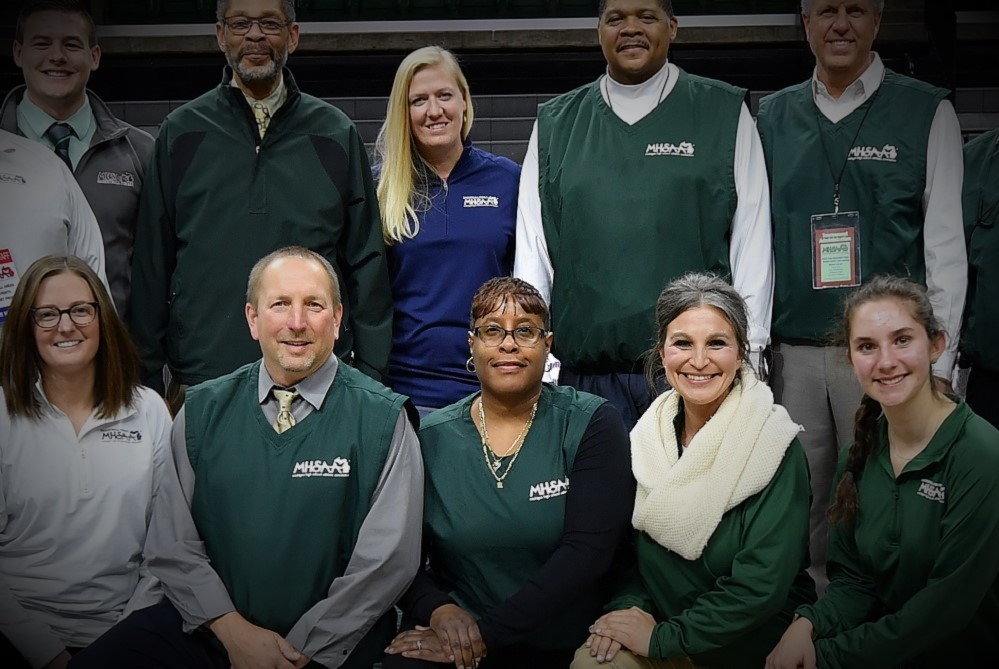
Nonfaculty Coaches
June 18, 2012
Since the so-called heyday of school sports in the 1950s, when you could count on more talk in a community about its few high school teams than about all the college and professional sports teams in the country combined, some things have improved – diversity and safety, for example; but some things have not met the high ideals hoped for in educational athletics.
During the explosive growth period of school sports in the 1970s and 1980s, when girls programs were introduced or reintroduced to schools and well-established community programs were added to the school sports curriculum, schools in almost every state had to backpedal from the ideal that only trained educators – certified teachers – could coach interscholastic athletic teams. (In Michigan, except for two years in the mid 1950s when certified teachers were required, the rules only urge that coaches be certified teachers.)
While the number of sports and levels of teams have greatly expanded these past five or six decades, the coaching pool within the faculty of a school district has not. Furthermore, teachers’ salaries improved so much that coaching stipends became less necessary to supplement teachers’ incomes, so teachers “volunteered” less readily to serve as coaches for a second and third sport.
Moreover, the coaching demands for one sport increased out of season, interfering with a person’s availability to help coach second and third sports during the school year. This was commonplace in the sports that moved from the community into schools, but the out of season demands have increased significantly for traditional school sports as well.
There is irony that community youth sports programs not only have provided school districts with a pool of informed and interested people to serve as coaches, but they have also increased the demands on coaches so much out of season that coaches must specialize in a single sport and therefore are less available to assist with the many different sports and levels of teams that school districts struggle to provide students.
It is estimated now that more than half of all high school coaches do not work in the school building where they coach, which can create communications challenges for schools. A smaller but growing number of high school coaches do not work at all in the field of education, which can create philosophical problems as well. Not always, of course; in fact, many nonfaculty coaches are a rich and increasingly indispensible blessing for school sports.

In Memoriam: Brenda Henry (1967-2021)
By
Geoff Kimmerly
MHSAA.com senior editor
April 30, 2021
Brendaettie “Brenda” Henry, a dedicated academic and athletic presence at Detroit Western International High School for more than three decades and an integral member of the tournament management staff annually for the MHSAA Girls & Boys Basketball Finals at Breslin Center, died unexpectedly April 21.
Henry had served on staff at Western since 1989, most recently as an academic interventionalist in charge of working with seniors and getting them scholarships, and she also oversaw Western’s night school IMPACT (formerly Second Chance) Program that assists high school students with credit recovery.
 She also had served as Western’s athletic director for four years and coached volleyball, basketball and track & field, and she was a registered MHSAA basketball official for 14 of the last 16 seasons.
She also had served as Western’s athletic director for four years and coached volleyball, basketball and track & field, and she was a registered MHSAA basketball official for 14 of the last 16 seasons.
Every winter for nearly 15 seasons, Henry’s educational service extended to her MHSAA basketball family as she contributed to championship weekends at Breslin and previously Eastern Michigan University.
“Brenda had a huge heart for people, and that’s why she was such a valuable part of our basketball tournament staff for so many years,” MHSAA Executive Director Mark Uyl said. “She was a huge reason the Breslin experience has been special for so many people.”
Henry, an alum of Detroit Northern High School, worked in Detroit Public Schools for more than 35 years total. She also was a sign language interpreter and active part of her church community.

